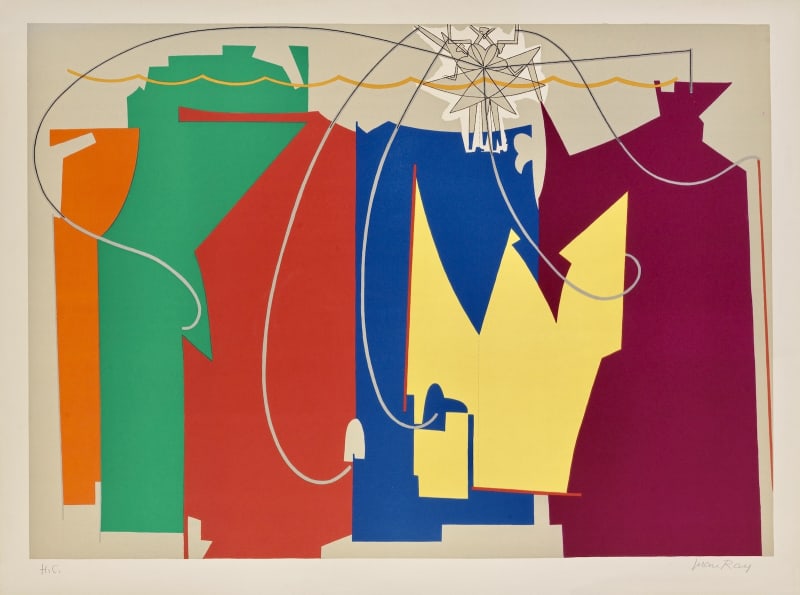“I paint what cannot be photographed, and I photograph what I do not wish to paint.”
(Man Ray)
Inventor of the Impossible Image
Man Ray, born Emmanuel Radnitzky in Philadelphia in 1890, was one of the most inventive and influential artists of the 20th century. A key figure in both the Dada and Surrealist movements, he defied categorization throughout his life, moving freely between photography, painting, drawing, printmaking, and experimental film.
In the early 1920s, after establishing himself in the New York Dada scene alongside Marcel Duchamp, Man Ray relocated to Paris, which would become his true artistic home. There, he became closely involved with the Surrealists around André Breton, developing a highly original visual language rooted in dream, desire, chance, and transformation.
Though widely known for his radical approach to photography — including his invention of “Rayographs” (cameraless photograms) and his iconic surrealist portraits — Man Ray was also a prolific and visionary draughtsman and printmaker. His lithographs, etchings, and drawings combine elegant line work with visual paradoxes, erotic symbolism, and psychological depth. He often used the most minimal of marks to evoke maximum conceptual weight, bridging poetry and form in a way uniquely his own.
Man Ray believed that art should not imitate life, but rather reinvent it. Whether he was staging dreamlike photographs, composing mysterious assemblages, or executing surreal drawings, he sought to create images that would bypass logic and speak directly to the subconscious.
“An original is a creation motivated by desire. Any reproduction of an original is motivated by necessity. It is marvelous that we are the only species that creates gratuitous forms. To create is divine, to reproduce is human.”
Throughout his life, Man Ray rejected all artistic dogma and continually reinvented his style. He lived as he worked: independently, restlessly, and with unrelenting curiosity. He died in Paris in 1976, where his gravestone bears the fitting inscription:
“Unconcerned, but not indifferent.”
Today, Man Ray’s work continues to inspire across disciplines — a testament to his belief in art as play, rebellion, invention, and liberation.
